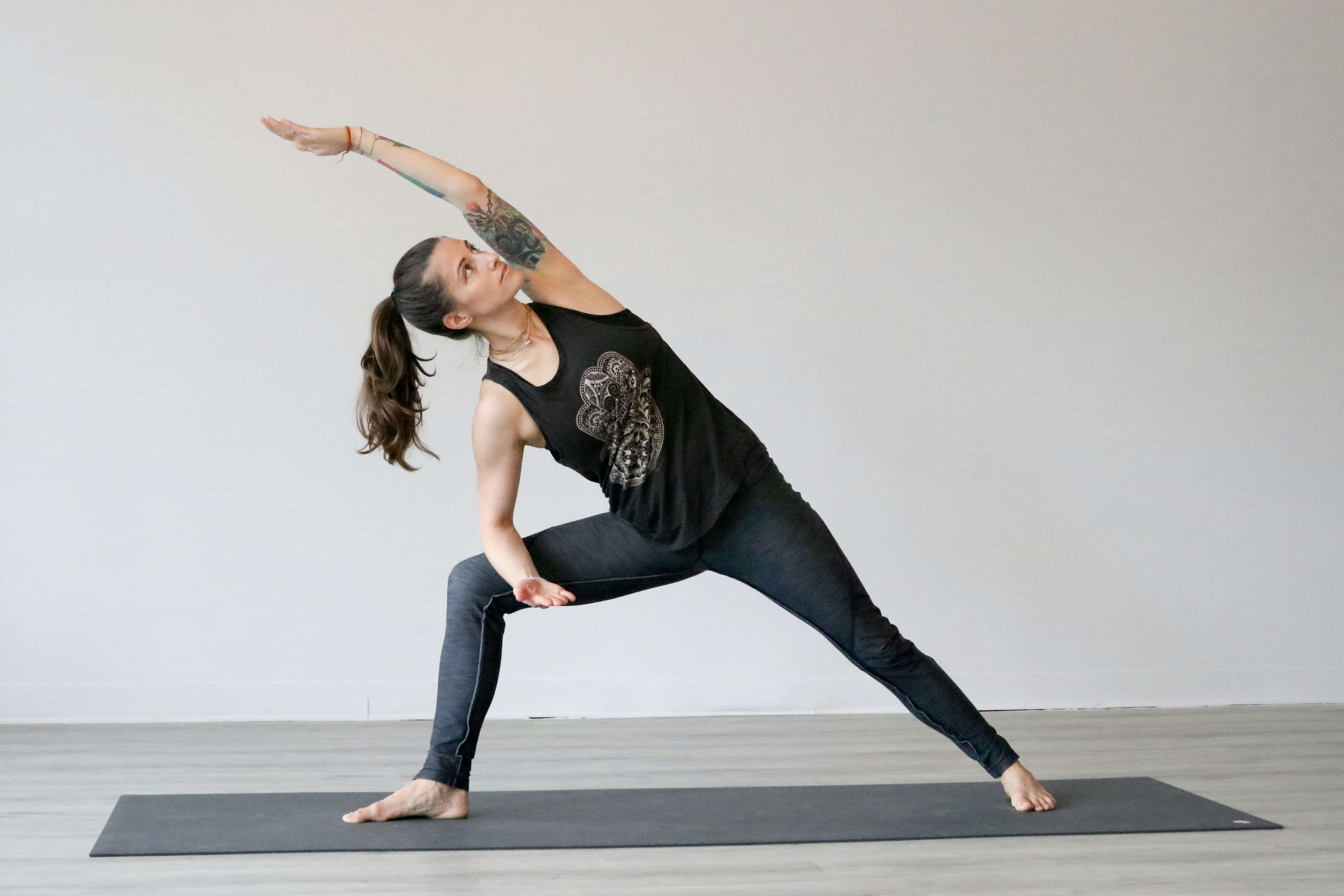
Editor’s Note: This post was originally published April 2013 and has recently been updated and revised for accuracy and comprehensiveness.
Aging is the natural process of growing older. Yet there are many factors that play a role in whether we age gracefully or if we are the one out of two people who age faster than our biological age.
More than half of us look older than we really are because we either engage in behaviors that increase our aging, or we do not actively support a more youthful body through inaction. Knowledge is power, and the more you know about how to avoid premature aging, the more control you can take toward maintaining a healthier, younger body and mind.
1. Premature Aging and Attitude
The mind plays a significant role in whether we are aging faster or slower, and we can use the mind to help us accelerate or decelerate the process. Happier people are quite simply younger looking people. The more you hold hope, optimism, and joy at the top of your list of priorities, the younger your face will appear. Moreover, happier people live longer often with fewer health problems like heart disease, high blood pressure, and even aching joints and bones.
Perpetual anger and distress can form permanently on the face in the form of fine lines and deep wrinkles, two sure signs of premature aging. When the face expresses chronic sad or angry emotions, the constant scowling can turn into wrinkles formed by muscle memory.
A happier face is devoid of wrinkled eyebrows and scowl marks because the muscles have spent more time in a relaxed state. This doesn’t mean that one bad day will give you a face full of wrinkles, but how your face carries your expression more than 50% of the time can determine how prematurely you form wrinkles, where, and how deeply.
2. Aging, Smoking, and Drinking
We all know that smoking and drinking in excess are not good for us. They lead to all kinds of health problems and deplete our bodies of necessary nutrients. Additionally, the lines and discoloration of a smoker or drinker are worn all over their face. The skin needs a certain amount of hydration, collagen, elastin, and oxygen in order to look youthful and healthy.
Smokers develop several signs of premature aging like fine lines around the mouth, deeper forehead wrinkles, and are twice as likely to develop bad teeth. The entire body, including the facial skin, is deprived of enough oxygen and the look and feel of a smoker’s face can be obvious over time.
Drinking excessively can leave permanent marks on the body as well. Aside from the damaging effects on the liver and kidneys, heavy drinkers have facial skin that has been discolored over time, has poor muscle tone, and often has broken blood vessels or small spider veins.

Get Your Free Guide
Learn How to Start a Fulfilling, Impactful Career as a Holistic Health Coach
You’ll learn:
- Why holistic health matters
- If holistic health coaching is right for you
- What career opportunities exist for health coaches
- And more!
3. Age, Sun, Cold, and Moisture
We can easily accelerate premature skin aging by basking in the sun’s rays. Sun damage is the number one cause of wrinkles and skin that has been permanently damaged.
Age spots and other forms of discoloration can be seriously exacerbated by the sun’s harmful UV rays. A face that has spent years working on its tan appears heavily wrinkled and touch like show leather. Once you pass the twenty minute mark in the sun, the benefits from absorbing necessary Vitamin D are counteracted by the damage of the UV rays to the skin.
Spending a life time in cold environments can have a similar effect. Rather than creating a tougher skin, the skin appears too thin and wrinkles develop. The same effect can be seen in people who use harsh acne treatments over a period of years.
When acne treatments dry out the skin, it can cause damage similar to the damage caused by cold and sun, creating a dry, tough, wrinkled face. When the skin’s natural oils are depleted, the skin loses its elasticity and the face ages. Moisturizing daily, sometimes two and three times per day, and protecting the skin for the sun and damaging cold can help combat premature skin aging.
4. Aging and Diet
One of the most commonly misunderstood aging factors is the effect that food has on the body. There are foods that you can eat that will help you retain a younger body and foods that can contribute to common signs of premature aging. Choosing a diet that is high in fats, sugars, processed foods, and low in fresh fruits and vegetables creates an internal environment that is anything but youth friendly.
Foods that cause inflammation, like refined sugar, white flour, and even excessive dairy products, can readily create inflammation in the body that contributes to the aging process. These foods tend to make the body “heavier” in feel and appearance because the internal organs are actually suffering from inflammation. Aside from this, our bodies do not process foods that are not in their natural form very well, which means the organic breakdown of nutrients is not being put to biological good use.
Replacing a sugary diet with fried and fatty foods, even if you are not overweight, with one that is high in natural products can keep the whole body looking tighter and younger.
5. Aging and Weight
Being too thin or too heavy can add to the aging process. Being underweight reduces the natural fats in the facial structure which allows the skin to sag and adds to the appearance of wrinkles. A face lift or Botox doesn’t help an underweight face look younger because the natural fattiness that fills out the face can’t be replaced with medical procedures like these.
Simply adding five pounds to an underweight body can bring back a softer, wrinkle free face. Too much weight can make us look older by creating poor muscle tone.
Overweight people, especially as they age, tend to be less active and this leads to chronic health problems and the cycle of aging continues.
Even in your forties, fifties, sixties, and sometimes beyond, putting on a few extra pounds doesn’t mean that you have to carry around a spare tire. Rather, targeted exercise can keep your entire body in shape while adding muscle reduces the flabby, wrinkly look that too much fat can produce.
People who have suffered from eating disorders also tend to develop wrinkles, dry skin, and skeleton like features as they reach their thirties and forties. The body has spent an extended period of time malnourished, even if it was fifteen or twenty years before.
The effects of this phenomenon can be combated through a diet rich in antioxidants, fresh, natural foods, and ample muscle building exercise that does not result in excessive weight loss. Since the metabolism was effected during the time of the eating disorder, those who have recovered should periodically see a nutritionist to develop high energy, low fat, age fighting dietary plans.
6. Aging and Choices
We all make daily choices that either help or hinder the aging process. Regular work outs can help prevent premature aging and keep the entire body in great shape.
Choosing television in the evening over physical exertion can lead to premature aging.
The chronic use of harsh chemicals on and around the body can add to aging, not to mention disease.
Everything from finger nail polish to natural products that make you feel good (aka high) and the medications that we pump into our body can have age related side effects.
The closer we can get back to the natural form our bodies crave, the less likely we are to see our body’s age right in front of our eyes.
Making choices that work with our body rather against it can help slow down the aging process. Learning to listen to your body can change everything. Stop eating when you’re full. Rest when you’re tired. Focus on yourself in a way that you never have before.
Turn toward natural interventions when possible instead of chemical alterations for turning back the clock. These are simple choices that work with our bodies’ own natural rhythm and pay us back in dividends beyond belief.
7. Aging and Stress
Chronic, high stress lives are a good recipe for aging. Aside from the effects that a worried face has on facial wrinkles, stress affects everything from the way we carry ourselves to our energy level. People who are consumed with daily stress do not walk tall and proud like people who are feeling good about themselves. They move slower and they challenge their bodies less. People who are overwhelmed with stressed also tend to have illnesses that can help the aging process along.
A certain amount of stress is actually good for us, although stress that creates physical signs on the body should be handled on a pleasant and relaxing manner.
Grab a weekly massage and practice calm forms of exercise like Yoga (check out our article Yoga for Tension Relief for more). Meditation can also help improve your overall stress level, which can make you feel more focused and younger.
While we can’t keep those birthdays from rolling around in our direction, we can take affirmative action to keep the aging process from taking over our lives. With less stress, better diet and exercise, and a happier outlook, we can retain our youthful joy and keep our spirits much younger. The youthful joy on the inside will be noticeable on the outside.

Get Your Free Guide
Learn How to Start a Fulfilling, Impactful Career as a Holistic Health Coach
You’ll learn:
- Why holistic health matters
- If holistic health coaching is right for you
- What career opportunities exist for health coaches
- And more!
About the author:
Vivian Rivera writes for a website created by her husband, Ryan. He has tried many anxiety cures and it took 7 years of suffering and a tipping-point in his life to make a number of “huge leaps” toward getting rid of his anxiety and a more fulfilling life. His success inspired him to create website www.calmclinic.com which helps other people get rid of this annoying condition.



